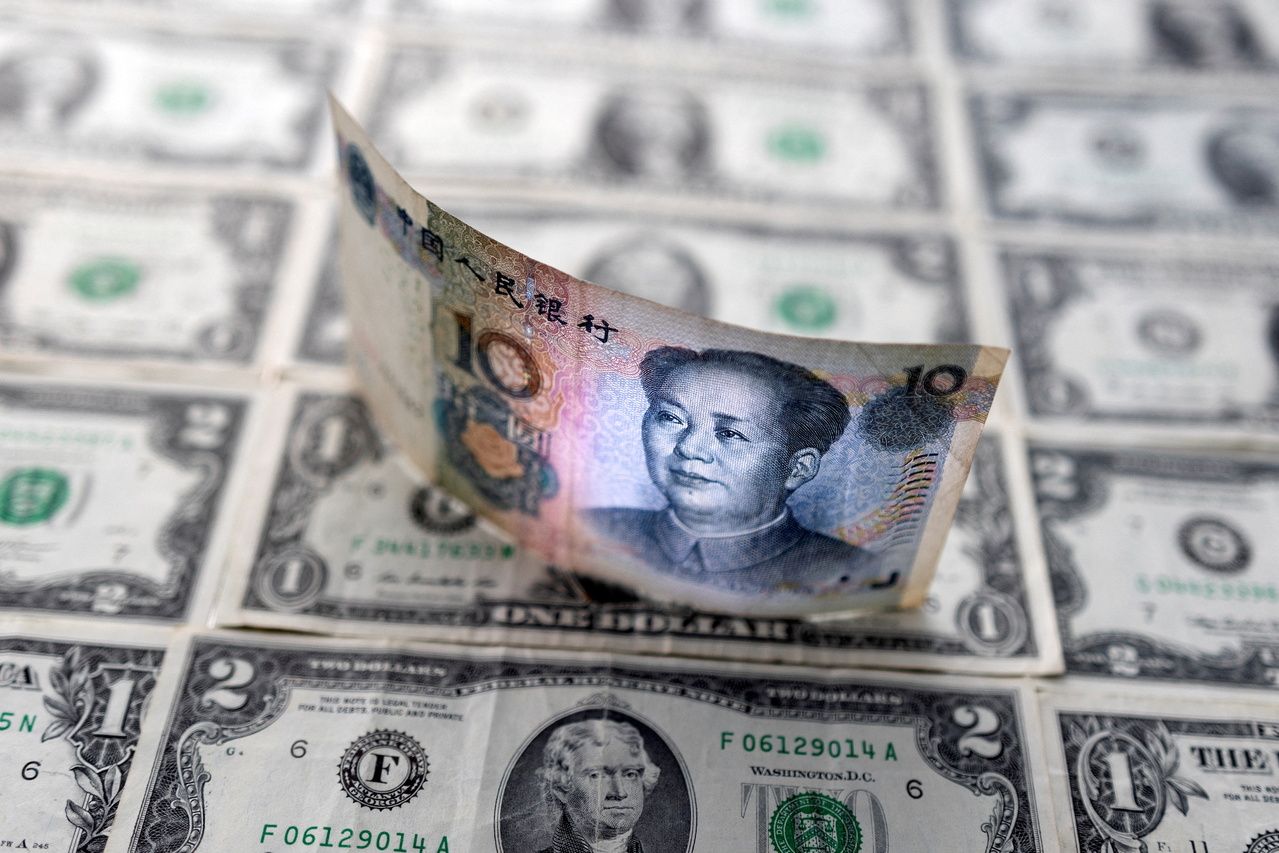China's sudden currency plunge raises risk of 2015-style panic
Sign up now: Get ST's newsletters delivered to your inbox

Diverging monetary policies, interest rates and economic conditions are some reasons for the renminbi to weaken against the dollar.
PHOTO: REUTERS
Follow topic:
HONG KONG (BLOOMBERG) - When China's tightly managed currency depreciates dramatically against the US dollar, it can be hard to stop.
More than six years after China's shock 2015 devaluation roiled global markets and spurred an estimated US$1 trillion (S$1.39 trillion) in capital flight, the renminbi is weakening at a similar pace.
Onshore, it has lost nearly 4 per cent in eight days, while the offshore rate is heading for its worst month relative to the greenback in history. Selling momentum is the strongest since the height of Mr Donald Trump's trade war in 2018.
There are plenty of reasons for the renminbi to weaken against the dollar, namely diverging monetary policies, interest rates and economic conditions. And the renminbi is not even keeping pace with many of China's big trading partners, strengthening relative to the euro, the yen and the Australian dollar this month. In short, China may just be allowing its currency to break with a rallying dollar.
But there is a risk such moves will accelerate, or suggest a loss of confidence in China at a time when global funds are already pulling out of the country's assets. Pressure is building as President Xi Jinping prepares for the 20th Party Congress later this year - a twice-a-decade leadership shuffle that is expected to secure him a third term in power.
Policymakers including the People's Bank of China (PBOC) have repeatedly pledged to boost sentiment in financial markets - to little avail - while avoiding the kind of heavy-handed intervention that spooked global investors in 2015.
The sell-off in the onshore and offshore renminbi deepened on Friday (April 29) after the nation's health officials vowed to stand by its zero-Covid-19 policy.
"China can't afford a massive outflow of capital right now," said Ms Alicia Garcia-Herrero, Natixis chief Asia-Pacific economist. "The PBOC... will do its best not to be seen as pushing capital controls, especially ahead of the 20th Party Congress."
There is plenty of room for the currency to weaken. The renminbi is coming off a high base after appreciating against every major peer last year and surging to the strongest on record against a basket of trading-partner currencies.
Surging demand for Chinese goods during the pandemic beefed up exporters' earnings. At the same time, the resilient economy and strengthening currency lured foreign investors to sell dollars for renminbi to buy Chinese stocks and bonds. The authorities were clamping down on speculation in the strengthening currency as recently as December.
But intervention has been limited. While the PBOC this week increased the supply of foreign exchange onshore, the move was not even enough to reverse changes made in December. It has various other tools at its disposal to manage the renminbi, the most visible of which is a daily reference rate set against the dollar - used by China when it devalued in 2015. But Friday's fixing was only slightly stronger than expected. There was also little sign of state banks buying renminbi at the close, said traders.
"While Chinese policymakers have clearly signalled their discomfort with the speed of this move, tolerance for gradual renminbi depreciation may remain part of the policy toolkit to support Chinese growth in coming months," Mr Ian Tomb, an analyst at Goldman Sachs in London, wrote in a note this week.
Psychological level
But controlling the pace of declines without intervention is another matter. When the renminbi weakened past the key psychological level of 7 per dollar in 2019, it went on to depreciate another 2.6 per cent to 7.1854 before stabilising. The depreciation was due to factors that were less "toxic" for the currency than they are now, said Mr David Qu, an economist covering China for Bloomberg Economics.
Ms Wang Chunying, spokesman of the State Administration of Foreign Exchange, said last week that China "has the foundation and conditions to adapt to the Fed's policy adjustment". Recent moves in the currency were driven by the market and expectations on the renminbi have been "basically stable", she said.
The strongest dollar in nearly two years can be a challenge for China's policymakers, who have to choose between allowing the renminbi to rise alongside the US currency - thereby hurting exporters - or push it lower and risk spurring outflows. The current choice appears to be the latter: March data already showed slower export growth, before the protracted lockdown in Shanghai.
"When dollar-renminbi moves up, all the bad stuff starts to happen - capital outflows tightening liquidity - so it is a very difficult balancing act for the central bank," Mr Adarsh Sinha, foreign exchange strategist at Bank of America, said on Bloomberg Television. "They want a weaker renminbi from a competitiveness point of view, but engineering that in an orderly manner as we know historically has been quite difficult."

